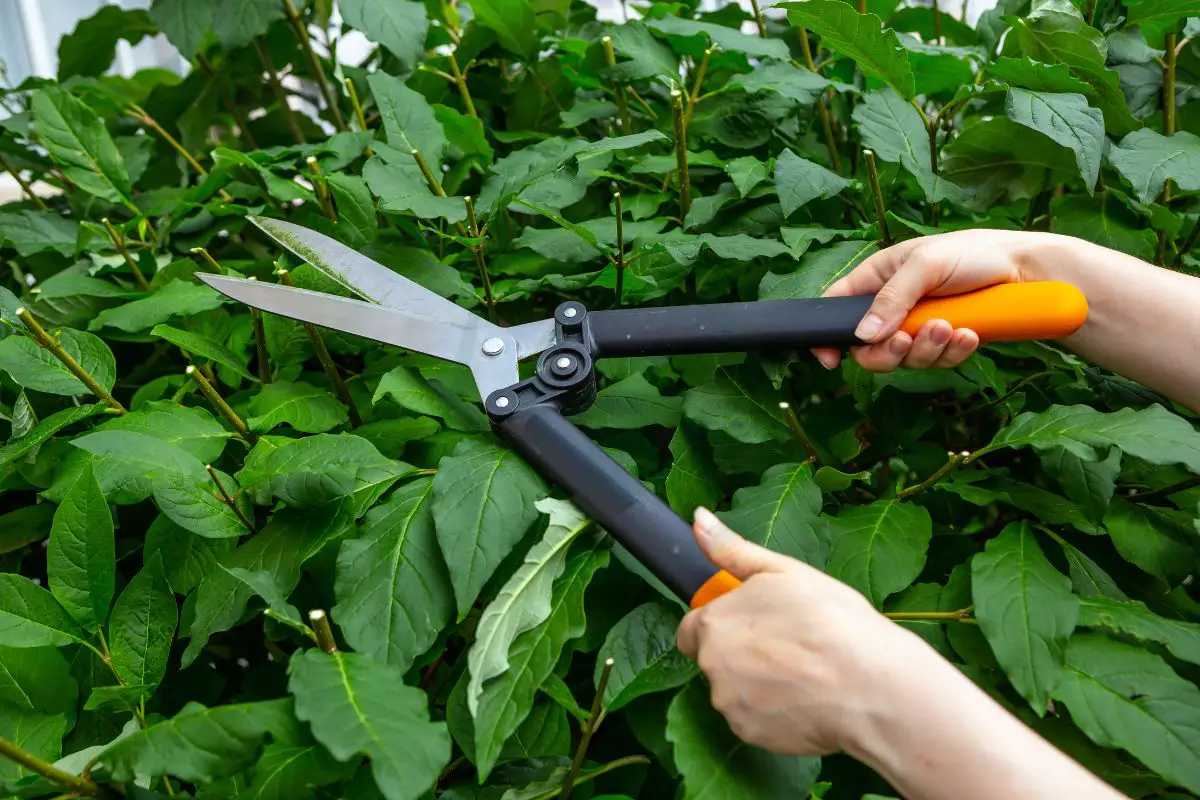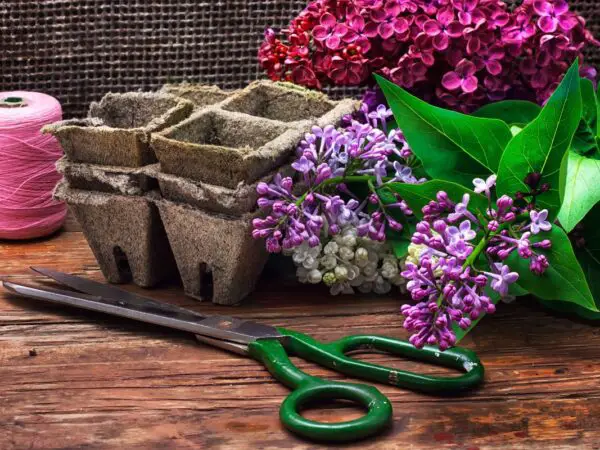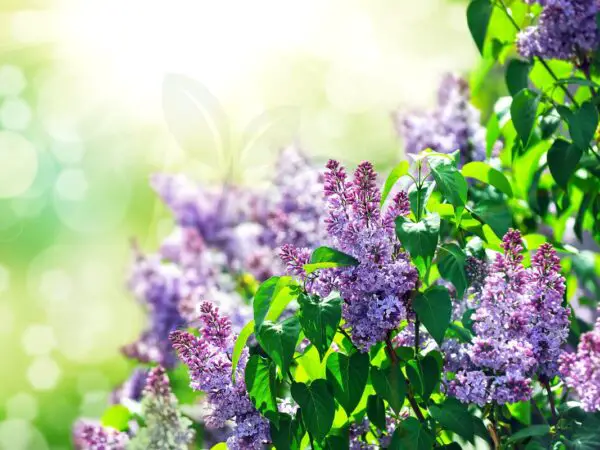Wondering when to trim lilac bushes in Ohio for optimal growth? Knowing the right time can make a significant difference in the health and beauty of your garden.
Lilac bushes should be pruned after they have finished blooming, typically in late spring or early summer. This timing allows the plant to recover and develop new growth before the next flowering season. By following these guidelines, you can ensure your lilac bushes thrive and produce vibrant blooms year after year.
Curious to learn more about caring for lilac bushes in Ohio? Keep reading for expert tips and advice on maintaining these beloved plants in your garden.
Key Takeaways
- Timing Matters: Trim lilac bushes in Ohio right after they bloom to ensure healthy growth and abundant blooms next season.
- Regular Maintenance: Engage in maintenance pruning annually to keep lilac bushes in optimal shape and encourage new growth.
- Revitalize with Rejuvenation: Consider rejuvenation pruning every few years to invigorate older lilac bushes and promote vigorous blooming.
- Healthy Growth Promotion: Focus on proper pruning techniques to promote airflow, sunlight penetration, and overall health of lilac bushes.
- Blooms Enhancement: Prune strategically to enhance the quality and quantity of lilac blooms, ensuring a vibrant display each year.
- Avoiding Mistakes: Be cautious with pruning depth and timing to prevent damage and maximize the blooming potential of lilac bushes.
Understanding Pruning
Importance
Pruning lilac bushes is crucial for their health and blooming. Proper trimming promotes new growth and maintains the shrub's appearance. Neglecting to trim lilac bushes can impact their vitality and flowering capacity.
Timing Overview
Prune lilac bushes in Ohio at the specific time frame to avoid consequences on next year's flowers. Timing is essential for maintaining healthy lilac bushes by ensuring optimal growth conditions.
Types
Maintenance
- Hand pruning is beneficial for regular maintenance of lilac shrubs.
- Cutting back to an outward facing bud during maintenance pruning is significant.
- Techniques involved in regular maintenance pruning are crucial for the overall health of lilac bushes.
Rejuvenation
- Rejuvenation pruning is necessary for older, neglected common lilacs.
- It encourages new growth and revitalizes older lilac bushes.
- The rule of thirds guides the application of rejuvenation pruning for older lilac bushes.
Timing in Ohio
Best Periods
Pruning lilac bushes in Ohio should ideally be done immediately after they finish flowering. This timing allows the shrub to rejuvenate without disrupting next year's bloom. Selecting the right period for pruning is crucial for promoting healthy growth and abundant flowering.
Understanding the correlation between timing and the health of lilac bushes is essential. Pruning at the correct time ensures that the plant can recover effectively, leading to stronger branches and more vigorous blooms. Proper timing can also help prevent diseases by allowing wounds to heal swiftly.
Choosing the best period for pruning can significantly enhance the overall well-being of lilac bushes. By trimming them at the right time, you encourage new growth, which contributes to a fuller and healthier shrub. This practice also helps maintain the plant's shape and size, promoting an aesthetically pleasing appearance.
Seasonal Considerations
Seasonal factors play a vital role in determining when to prune lilac bushes in Ohio. During spring, after blooming, is an ideal time for pruning as it allows for fresh growth before winter sets in. Summer pruning can be done to remove deadwood or shape the shrub.
Different seasons can impact how lilac bushes grow and bloom. Spring pruning encourages new shoots that will produce flowers next season, while fall pruning focuses on removing weak or damaged branches to prepare the plant for winter dormancy. Adapting your pruning practices based on seasonal changes is key to ensuring the optimal health of your lilac bushes.
Adapting your pruning practices based on seasonal changes is crucial for maximizing the health of lilac bushes in Ohio. Tailoring your approach depending on whether it's spring, summer, fall, or even winter ensures that you are addressing specific needs at different times of the year. This flexibility allows you to promote vigorous growth and vibrant blooms throughout each season.
Maintenance Pruning
Techniques
Pruning lilac bushes involves various techniques to ensure their health and appearance. Use hand pruners for accurate cuts. Proper methods include shaping and removing dead or diseased stems.
Preserve the natural shape of lilac bushes by understanding how to maintain their aesthetic appeal. Utilize proper shaping techniques to promote healthy growth. Remember the significance of preserving the shrub's form.
Shape Preservation
To maintain the natural form of lilac bushes, employ tips for preserving while encouraging healthy growth. Learn how to preserve the shrub's aesthetic appeal through proper shaping methods. By following these techniques, you can ensure your lilac bushes thrive.
Rejuvenation Pruning
Methods
Pruning lilac bushes involves various methods depending on their age and condition. Rejuvenation pruning focuses on revitalizing older, neglected shrubs to stimulate new growth. This method differs from maintenance pruning by being more drastic and involving the removal of old, woody branches. When choosing a pruning method, consider the overall health of the bush and its specific needs to promote longevity.
- Maintenance Pruning: Regular trimming to maintain shape and encourage healthy growth.
- Rejuvenation Pruning: Drastic cutting back of overgrown bushes to rejuvenate growth.
Overgrown Bushes
Recognizing signs of overgrown lilac bushes is crucial for determining when rejuvenation pruning is necessary. Overgrown shrubs typically exhibit dense, tangled growth with minimal flowering. Challenges arise when dealing with overgrown bushes due to the need for extensive pruning that may shock the plant initially. To effectively address this issue, carefully plan and execute rejuvenation pruning techniques tailored to each bush's unique requirements.
- Signs of Overgrowth: Dense foliage, lack of blooms, tangled branches.
- Challenges: Initial shock to plant, extensive cutting required.
- Effective Solutions: Thoughtful planning, gradual rejuvenation process tailored to each bush.
Promoting Healthy Growth
Aftercare Tips
To promote new growth after trimming lilac bushes, it's crucial to provide adequate aftercare. Fertilization and watering are key components in encouraging healthy regrowth post-pruning. These practices play a significant role in maintaining the vitality and blooming capacity of lilac bushes.
Implementing proper aftercare techniques is essential for ensuring the shrub's overall health and longevity. By focusing on fertilization and watering, you can support the growth of new sprouts and maintain the beauty of your lilac bushes. Remember, consistent care is vital for optimal results.
Fertilization
Fertilization plays a vital role in promoting the growth and blooming of lilac bushes. Selecting the right fertilizers and applying them correctly are crucial steps in supporting the health and vigor of your shrubs. Proper fertilization not only aids in new growth but also helps in sustaining the overall well-being of the plant.
When it comes to fertilizing lilac bushes, timing is key. Applying fertilizer at the right time can significantly impact the plant's development and blooming potential. By understanding the specific nutrient requirements of lilac bushes, you can ensure that they receive the necessary nourishment for optimal growth.
Enhancing Blooms
Sunlight Needs
Lilac bushes require ample sunlight for optimal growth and abundant blooming. Insufficient sunlight can hinder their flowering capacity. Placing lilac bushes in areas with full sun exposure is crucial.
Understanding the sunlight requirements of lilac bushes is essential to ensure their health and blooming potential. Without adequate sunlight, these shrubs may struggle to produce vibrant blooms. Proper placement in sunny spots is key to maximizing their beauty.
Placing lilac bushes in areas with sufficient sunlight exposure is vital for their overall well-being. Direct sunlight helps these plants thrive and produce an abundance of beautiful blooms throughout the growing season.
Watering Practices
Proper watering practices are essential for maintaining healthy lilac bushes. These shrubs have specific watering needs based on factors such as age and environmental conditions. Adequate watering contributes significantly to the shrub's vitality.
Discovering the appropriate watering practices for lilac bushes is crucial for their overall health. Different age groups of lilac bushes may have varying watering requirements, so it's important to tailor your watering routine accordingly. Consistent and adequate watering can enhance the shrub's growth and flowering capabilities.
Understanding the impact of proper watering on lilac bushes is vital for promoting their health and vitality. By providing the right amount of water at the right time, you can support robust growth and encourage abundant blooming in these beautiful shrubs.
Avoiding Common Mistakes
Late Pruning
Late pruning of lilac bushes can significantly reduce their blooming capacity, affecting the vibrancy and abundance of flowers. Pruning beyond the recommended time frame can lead to stunted growth and delayed flowering in the following season. The health and appearance of the lilac shrub may be compromised due to late pruning, impacting its overall vitality.
Over-Pruning
Over-pruning lilac bushes poses risks such as reduced flower production and weakened growth potential. Signs of over-pruning include sparse foliage, lack of blooms, and overall stress exhibited by the shrub. Maintaining a balance between trimming and growth promotion is essential to prevent over-pruning and ensure healthy development.
Yearly Schedule
Annual Trimming
Regular annual trimming plays a crucial role in maintaining the health and appearance of lilac bushes. By trimming these bushes yearly, you can encourage new growth and ensure vibrant flowering each season. Incorporating this practice into your routine helps in shaping the bush and preventing overgrowth.
Inspecting your lilac bushes regularly is vital for their overall well-being. These inspections help you identify any signs of disease, pests, or other issues early on. By conducting routine checks, you can address problems promptly and ensure that your lilac bushes remain healthy and thriving.
Inspection Routine
Conducting regular inspections on your lilac bushes is essential for their longevity. These routine checks allow you to spot any issues before they escalate, ensuring that your bushes stay healthy and robust. By identifying problems early through inspections, you can take necessary actions to maintain the vitality of your lilac bushes.
Advanced Tips
Tools Selection
When pruning lilac bushes in Ohio, it is crucial to have the right tools for the job. Essential tools include sharp pruning shears for cutting small branches and stems. Loppers are ideal for thicker branches, while a handsaw may be needed for larger cuts.
Understanding the specific uses of each tool is essential. Pruning shears are perfect for precise cuts on smaller branches, promoting healthy growth. Loppers provide leverage for cutting thicker branches cleanly. A handsaw helps tackle larger limbs with ease, ensuring a neat finish.
Selecting the right tools ensures precise and accurate cuts during pruning. Sharp tools make clean cuts that heal quickly, reducing the risk of disease. Proper tool maintenance, such as sharpening blades regularly, is key to effective pruning.
Disease Prevention
To maintain healthy lilac bushes in Ohio, disease prevention through proper pruning practices is vital. Regular pruning promotes air circulation, reducing moisture levels that can lead to diseases like powdery mildew or bacterial blight.
Understanding common diseases that affect lilac bushes is crucial. Powdery mildew appears as a white powdery substance on leaves, while bacterial blight causes dark spots and wilting. By recognizing these signs early on, you can take preventive measures promptly.
Preventing diseases plays a significant role in long-term health and vitality of lilac bushes. Pruning away infected branches, disinfecting tools between cuts, and cleaning up fallen leaves can help stop the spread of diseases. Healthy bushes are more resilient against pests and environmental stressors.
Closing Thoughts
In Ohio, knowing when and how to trim your lilac bushes is key to ensuring their health and vibrancy. By understanding the different pruning techniques, timing considerations, and maintenance tips outlined in this guide, you can promote healthy growth, enhance blooms, and avoid common pitfalls. Following a yearly schedule and implementing advanced strategies will help you cultivate thriving lilac bushes that beautify your outdoor space.
Now that you have the knowledge to expertly care for your lilac bushes, it's time to roll up your sleeves and put these insights into action. Take advantage of the tips provided here to trim your bushes with confidence and watch them flourish year after year. Share your newfound expertise with fellow gardeners and continue exploring ways to elevate your gardening skills. Happy pruning!
Frequently Asked Questions
When is the best time to trim lilac bushes in Ohio?
Late spring, after blooming, is the ideal time to trim lilac bushes in Ohio. This allows for new growth to establish before winter sets in.
How often should I prune my lilac bushes for maintenance?
Perform light pruning every year after flowering to maintain the shape and size of your lilac bushes. Avoid heavy pruning, as it can reduce blooms for the following year.
What is rejuvenation pruning for lilac bushes?
Rejuvenation pruning involves cutting back overgrown or neglected lilac bushes to stimulate new growth and improve overall health. It's recommended to do this type of pruning every few years.
How can I promote healthy growth in my lilac bushes?
To promote healthy growth, ensure your lilac bushes receive adequate sunlight, water, and nutrients. Regularly remove dead or diseased branches, and apply a balanced fertilizer in early spring.
What are some common mistakes to avoid when trimming lilac bushes?
Avoid pruning too late in the season, as it can impact next year's blooms. Refrain from removing more than one-third of the plant at once to prevent stress on the bush.
Image Source: Paid image from CANVA





